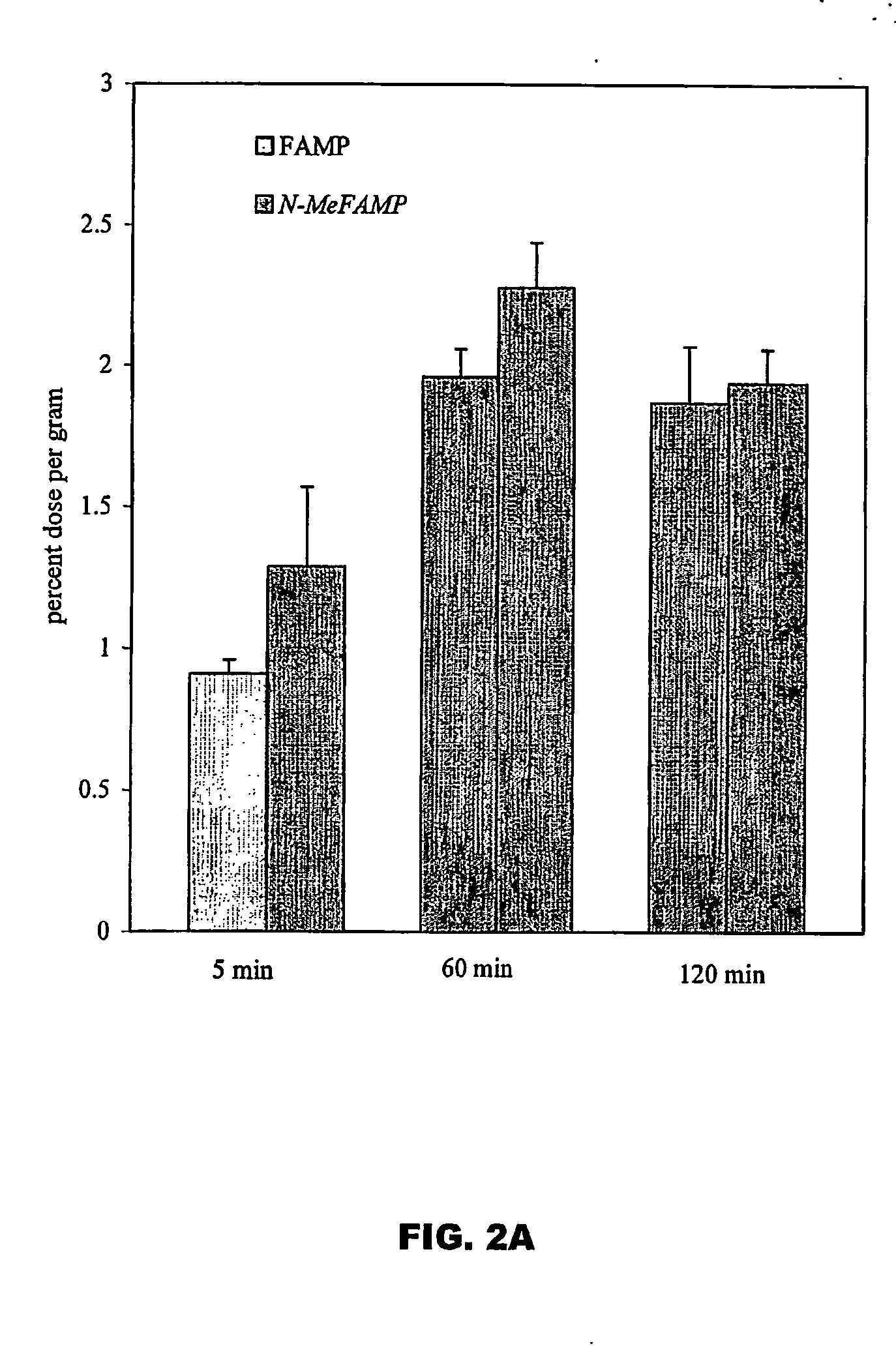Tumor imaging compounds
a tumor imaging and compound technology, applied in the field of tumor imaging compounds, can solve the problems of insufficient detection of tumor recurrence, and insufficient detection of tumor recurrence, and achieve the effect of rapid uptake and prolonged retention
- Summary
- Abstract
- Description
- Claims
- Application Information
AI Technical Summary
Benefits of technology
Problems solved by technology
Method used
Image
Examples
examples
[0078] All reagents used were obtained from commercially available sources. Solvents used in reactions were purchased from Aldrich Chemicals while solvents for chromatography were obtained from VWR. Melting points are uncorrected and were determined in capillary tubes on an Electrochemical 9100 apparatus. 1H NMR spectra were recorded on a Varian spectrometer at 400 MHz unless otherwise indicated and referenced to the NMR solvent (chemical shifts in δ values, J in Hz). Mass spectra were determined on a VG 70-S double focusing mass spectrometer using high resolution electron ionization. Elemental analyses were performed by Atlantic Microlabs, Inc. and were within ±0.4% unless otherwise stated. The phrase “usual work up” refers to the use of anhydrous magnesium sulfate followed by concentration under reduced pressure. The compounds 3-benzyloxypropanone [Boger, D L et al. (1992), J. Amer. Chem. Soc. 114:9318-9327] and bis(4-methoxyphenyl)chloromethane [Dutta, A K et al. (1996), J. Med. ...
PUM
| Property | Measurement | Unit |
|---|---|---|
| pH | aaaaa | aaaaa |
| temperature | aaaaa | aaaaa |
| depth | aaaaa | aaaaa |
Abstract
Description
Claims
Application Information
 Login to View More
Login to View More - R&D
- Intellectual Property
- Life Sciences
- Materials
- Tech Scout
- Unparalleled Data Quality
- Higher Quality Content
- 60% Fewer Hallucinations
Browse by: Latest US Patents, China's latest patents, Technical Efficacy Thesaurus, Application Domain, Technology Topic, Popular Technical Reports.
© 2025 PatSnap. All rights reserved.Legal|Privacy policy|Modern Slavery Act Transparency Statement|Sitemap|About US| Contact US: help@patsnap.com



